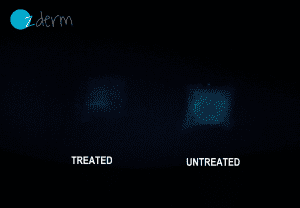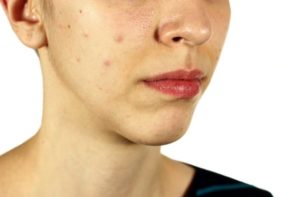When cosmetic companies evaluate the potential to conduct an in vivo scientific study or consumer study on a skin care product, one of the major deciding factors is naturally its cost. It is no surprise then, that research service providers like us spend a lot of time discussing this with clients! When clients are fairly new to conducting research, it is not uncommon for them to ask for an estimate even before study parameters have been determined.
For example, understandably, cosmetic companies may ask for a ‘price list’ where they expect to pick and choose various aspects about their study with associated prices for each item. However, it is difficult for research companies to produce such a list as they are not selling standard services. Rather, each study is unique and the work involved will be tailored services specific to the needs of the client. While the ultimate goal of contracting a clinical trial site is to get the research done, this is achieved through the man-hours that take to complete the project, the use of the equipment to conduct the assessments and the maintenance of it, as well as engaging their technical expertise and experience. Furthermore, it is important to keep in mind that all these aspects interact together, meaning that cost cannot simply be determined by adding up these aspects in isolation.
As a general rule of thumb, there are certain aspects of a study that will cost more than others. It is important for companies to be aware of this when designing their study, and we hope that the information provided here will give a basic understanding of what parameters influence the cost of a study and why that may be. By becoming more familiar with these aspects, companies will have a better idea, roughly speaking, of the costing associated with possible cosmetic testing in vivo.
Here is a list of the main elements and variables that are likely to make up the cost of a study:
Types of assessments
Based on the aim of the study, there are certain assessments that will be more suitable than others. Generally, cost decreases as one goes down the list:
- Digital photos (i.e. before & after comparisons) require a professional photography set up in order to take images with consistent lighting, exposure, distance, and angle to subject. Photos are mainly used for comparison purposes in order to visually identify changes in certain skin parameters (e.g. skin colour and texture). Additionally, image analysis can be performed to provide additional data.
- Objective measurements often involve instruments or other validated techniques used to objectively assess. For example, to quantitatively determine any changes in skin parameters (e.g. improvement in skin elasticity by x%).
- Expert assessment involves assessing changes in skin parameters through training and validated scales (i.e. expert’s opinion). Please note that depending on the expertise and qualifications of the expert, this assessment could be more expensive than digital photos or objective measurements. While it is not as an objective measure when compared to photos or instruments, it is recommended that their use in cosmetic studies should be limited to when objective assessments are not possible due to the nature of the outcomes measured.
- Subject questionnaires are based on the perception and opinion of the person taking part in the study and is therefore not an objective assessment. However, it allows to collect data on the likely opinion of future consumers with regards to various aspects such as perceived likeability, efficacy, and safety of the product (e.g. x% of people liked product consistency or x% thought their skin was softer)
Other study parameters
This section describes other aspects of the study that need to be considered. In general, cost is consummate with complex and time spent:
- The type of analysis performed on the data: Certain assessments, like objective measurements require more complex statistical analysis including QC of tables and figures.
- The number of participants in a study: this is a ‘sample size’ and is based on the aim of the study, the type of assessment, and the magnitude of the expected product effect. For example, if the aim of the study is to prove an improvement in skin hydration after x number of days/weeks, a certain number of participants should be included in the study. If the aim of the study is instead to prove a change in elasticity, the number of participants included in the study would likely be different. More participants will require more time from the study staff to properly screen and assess.
- Number of visits: dependent on the amount of expected change over time and the length of the effect being measured, the number of times a participant will vary. Each visit involves the study participant presenting to the scheduled appointment so the required skin assessments can be conducted. Studies will usually involve at least 3 visits or more if objective measurements are involved. However, where the primary aim of the study is to collect some consumer feedback, only 2 visits might be sufficient. Studies can have as many visits as needed to be able to collect the evidence required to support the desired claims.
- Duration of each visit: depending on the type of assessment and the number of assessments, duration of the visits can vary. Longer visit times will mean that less participants can visit on any one day.
- Preparation of study documents and setup costs: these are part of the study set up. Large studies (i.e. more assessments, more visits, more participants) will involve more preparation. If regulatory bodies are involved, this will also significantly increase the time required.
- Difficulty of recruitment: When inclusion/exclusion criteria are very selective (i.e. women with eye puffiness aged 20 to 30) or the study requirements are quite demanding (e.g. several visits, long visits, study procedure at home or in clinic is complex), less people are likely to be eligible or willing to take part. This in turn means more time will be spent on recruitment, with additional advertising being involved.
- Volunteer travel and time reimbursement: although subjects volunteer to be involved in a study, generally a travel reimbursement and/or small compensation for their time is provided. Compensation given is often relative to the number of visits and how difficult it is to follow study requirements.
Conclusions
We have so far identified the main components that determine the cost of a study. It is important to note that when multiple of the same element are included in the study, reductions can apply based on economies of scale. That, in conjunction with compounding interactions between aspects of the study means price per element is almost impossible to determine. Rather, a study must be looked at as a whole.
As a cosmetic company, it is important to understand that determining study cost starts with the study synopsis based on the desired outcome. This will detail the aims of the study, intended number of participants, number of visits, type of assessments, and so on. Unfortunately, the conversations between cosmetic companies and researchers start the other way around (i.e. with this cost, what study design can we have). These can be quite counterproductive for most clients! As with any other project type service, keeping the conversation on the aim of the study is the only way to figure out the costs involved.




